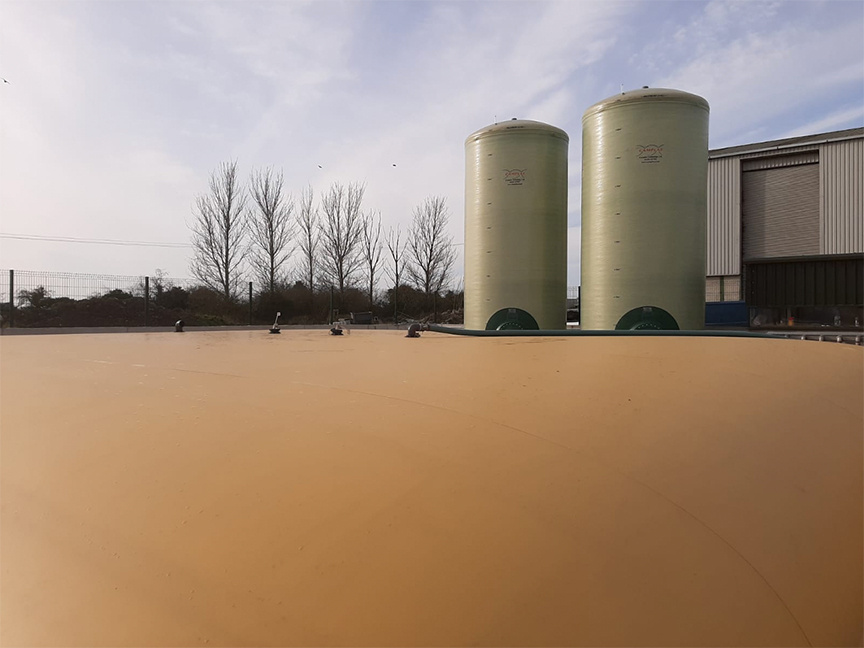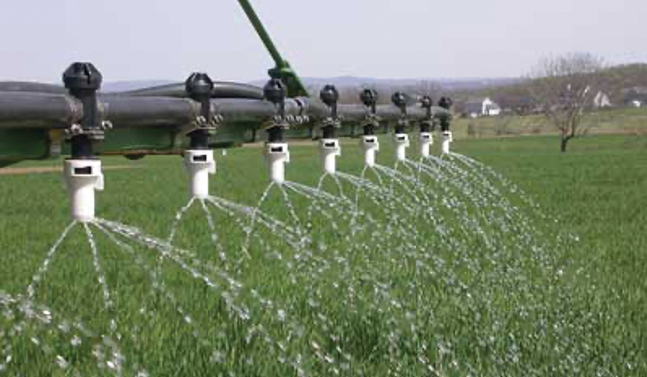 Drummonds continues to invest in liquid fertiliser and we have recently completed a large-scale liquid fertiliser plant at our Drogheda branch. This facility will enable Drummonds to provide customised nutrient packages tailored to the specific requirements of your crop.
Drummonds continues to invest in liquid fertiliser and we have recently completed a large-scale liquid fertiliser plant at our Drogheda branch. This facility will enable Drummonds to provide customised nutrient packages tailored to the specific requirements of your crop.
Liquid nitrogen fertiliser has increased in popularity over the last number of years. It is the simple application of liquid nitrogen fertiliser for your crops/grass. Providing nitrogen in the form of a plant-available liquid, it is immediately ready for plant-uptake. It is a soil acting fertiliser – fertiliser does not enter via the leaf. The nitrogen is available as urea (50%), ammonium (25%) and nitrate (25%), and does not need to go through a conversion process to be made available for plants. It is the best way of achieving high Nitrogen Utilisation Efficiency – giving you value for money.
So, why should I make the switch and what does it involve?
There are a number of reasons why you should make the change to liquid fertiliser over granular:
- Increased accuracy, especially on wider tramlines and headlands, therefore reduced waste. There are reports of 25% increased yields on farm headlands with liquid fertiliser, which is important (see Table 1 below).
- Reduced leaching, as there are three sources of N – ammonium, nitrate and urea. Fertiliser will not end up in hedgerows/water courses.
- Less weather dependant - greater window for application. Ideal in dry periods, wind speed does not affect spread pattern.
- Greater value for money.
- Uniform application.
- Nutrients are applied in a plant available form, ready for uptake, and don’t need to go through a conversion process.
- Increased Nitrogen Use Efficiency (NUE).
- Potential to save on fixed costs!

Table 1. Yield loss on headlands.
WW = Winter Wheat.
Liquid fertiliser is applied using sprayers (not spreaders) with special nozzle types. The fertiliser is applied as large droplets, instead of in a mist form usually associated with sprayers. This is important for liquid fertiliser as it is taken up through the roots, not through the leaf. Large droplets allows the nitrogen to bounce off the leaves and get down to the ground to be taken up by the roots.

Do Drummonds sell the nozzles for liquid N?
Yes. We stock two types of nozzles for liquid N – 5-star variable rate nozzles and dribble nozzles.
5-star variable rate nozzles (developed by BFS) apply the liquid fertiliser through 5 streams, providing excellent coverage. This reduces the risk of scorch damage as there is less drift and waste. They can apply a wide variation of fertiliser volume rates.
Is liquid N fertiliser more expensive than granular?
Liquid N matches the cost of granular CAN and will always be competitive with granular products. Therefore, it is a cost-effective option of fertiliser application.
Do Drummonds sell liquid fertiliser?
Yes - at our Drogheda branch, we have recently invested in a large-scale liquid fertiliser plant. Here, we can provide specific crop mixes to tailor for different crop nutrient requirements – the only independent merchant in the country capable of doing so. We have ample supply and endeavour to deliver the best liquid N service in the country.
For further information please speak with your local Drummonds Technical Advisor - Drogheda or speak directly with Brial Reilly, Agronomy Serrvices Manager Tel: Mobile 087 600 4800.
Seeing as 50% of the liquid N consists of urea, will it be lost to the atmosphere?
There will always be some potential to lose urea. However, at Drummonds, we have the option of adding AdvaNShield – a urease inhibitor, which slows down the release of Nitrogen. This allows for a more efficient conversion of nitrogen into crop yield. Additionally, it is fully compatible with sulphur grades. A series of replicated trials using AdvaNShield from three European Countries (including the UK) over three seasons demonstrated a 4% increase in crop yield. Other advantages in these trials included reduced leaching and improved water quality.
 How do I store liquid fertiliser?
How do I store liquid fertiliser?
Drummonds have liquid N tanks located across Leinster – some of which may be close to you. Farmers can use these tanks to fill from or come to our Drogheda branch and collect directly from us. If you would like to have a tank for your own farm, this can be arranged by Drummonds.
Do’s and Don’ts with liquid fertiliser:
- Do not exceed 2 bar pressure.
- Boom height: 700mm – 1 metre above crop canopy. Too low or too high will affect spread pattern.
- Two nozzle types – dribble and variable rate nozzles – which we supply.
- Do not spray if frost on leaf or on very dry leaves.
- Avoid spraying on a damp plant when temperatures may exceed 20 degrees.
- Avoid overlapping.
- Do not apply if windy – as can blow into streams.
- Do not mix anything else with it.
- Allow for a 2-day gap between liquid N and agrochemical application.
- Space out N applications evenly, i.e., avoid putting on 20 units on the last split!
- Wash out sprayer pumps, nozzles and lines each evening when finished – same as with a fertiliser spreader!!

